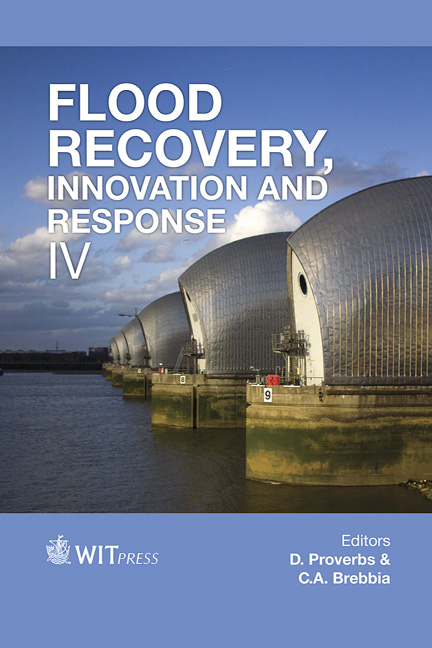A Practical Approach To Floodplain Mapping For Large-scale Catastrophe Models
Price
Free (open access)
Transaction
Volume
184
Pages
12
Page Range
49 - 60
Published
2014
Size
1,217 kb
Paper DOI
10.2495/FRIAR140051
Copyright
WIT Press
Author(s)
I. Carnacina & A. Jemberie
Abstract
Catastrophe models often cover large geographic areas spanning multiple countries or, in the case of flood models, entire watersheds. Models must be sufficiently detailed to accurately account for hydrologic variation, which is notably challenging when the modeled region is large. This is particularly true for flood models, which require a highly detailed dataset, usually derived from a digital terrain model (DTM), for reliable floodplain mapping. For one-dimensional (1D) hydraulic models, the floodplain mapping approach tends to yield flat surfaces often resulting in artefacts and inconsistencies near river confluences. Because flood extent is limited by the length of cross-sectional lines along the floodplain, these flat surfaces tend to drop sharply when the simulation reaches a flat delta. The use of a two-dimensional (2D) model avoids these problems, but at a high computational cost, and requires high quality terrain and bathymetry data. This paper presents a new methodology for mapping floodplains using water elevation points along a river network obtained from a 1D hydraulic model and a DTM. The methodology applies kinematic and diffusion wave equations in a simplified manner, using water elevation points as internal boundary conditions. Several parameters control the expansion and smoothing algorithms that generate realistic flood extent maps for different return periods. This methodology is particularly suitable for modeling large domains since it produces accurate results but requires much less computational time than a 2D model. In addition, because the computation uses several source points per cross section, the flood extent is not limited by the cross-sectional length, making this methodology appropriate for levee breaches and in cases where river banks are not well defined and the crosssectional geometry is derived from a DTM.
Keywords
risk assessment, flood, flood mapping, large scale model.





